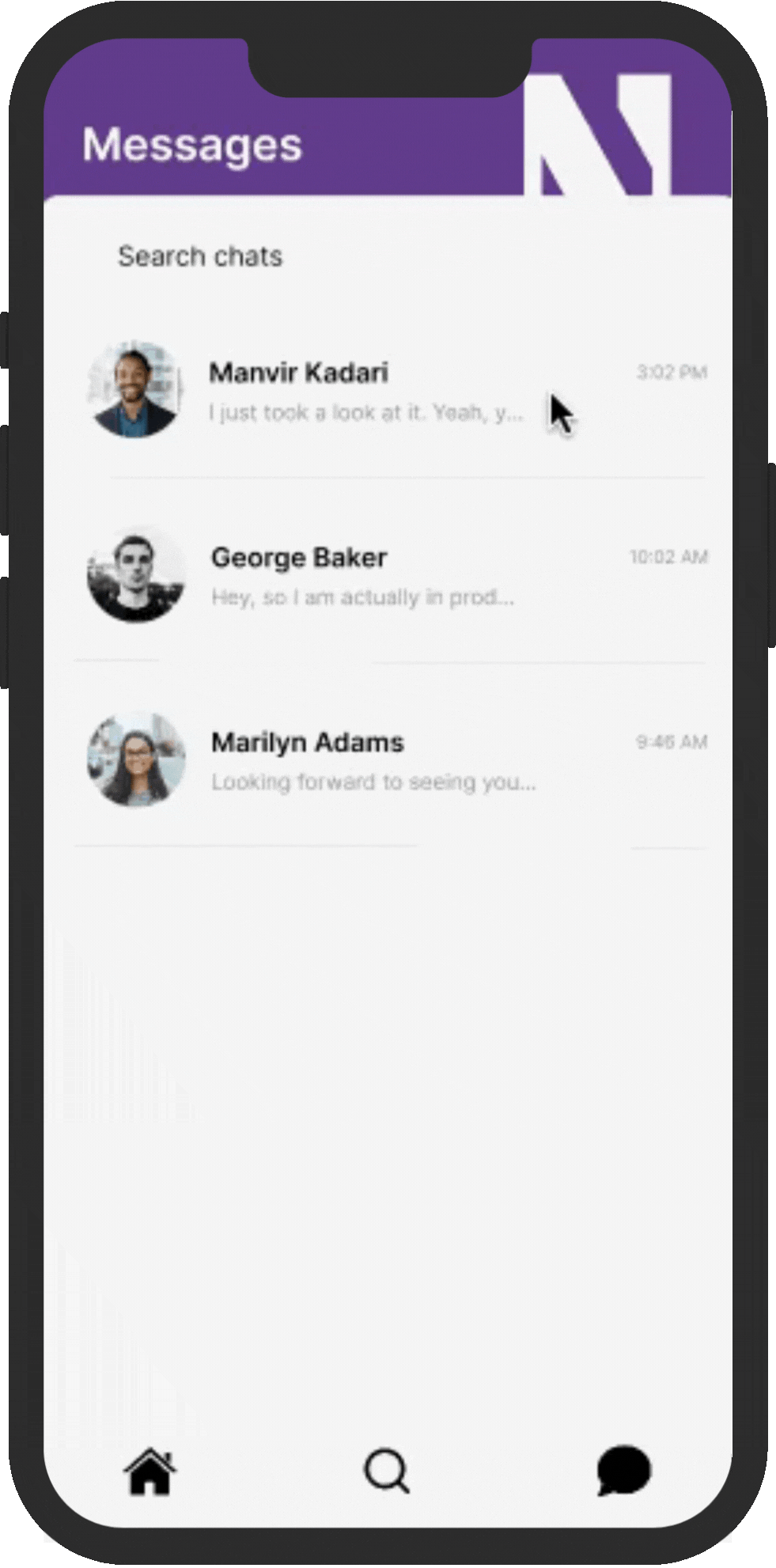ConnectU
Networking can feel daunting, but ConnectU makes it easy -- accelerating careers by connecting students to experienced, undergraduate peers.

Because everyone deserves to be in a career they love.
role
product designer
timeline
3 days, Spring 2024
tools
Figma, Figjam
team
Nicole Gunawan
Milan La
Joanne Tsai
Taehoon Kim
background
As part of this year's annual Rice Design-a-thon, all participants were tasked with building a solution to a college pain point. Through thorough data collection & analysis, my team decided to focus on issues surrounding career building & academics, as there exists significant gaps in the accessibility of resources.
problem
80% of jobs are filled through connections.
However, many college students hesitate to connect with established alumni & industry experts due to discomfort, fear of rejection & a lack of confidence.
Students should be offered a platform that allows them to access mentorship & expand their network -- without the formality of professional events.
solution
ConnectU is an app that breaks down communication barriers, so that connecting with the right undergraduate mentor feels as easy as clicking a button.
With an intuitive booking system, seamless matchmaking, and real-time feedback, individuals are empowered to thrive academically and professionally through engaging in high quality interactions that are of value to them.

user research
surveys
Identifying pain points related to existing student mentorship systems.
We made sure to include a variety of both closed and open-ended questions about receiving and providing mentorship to garner insights on how to design a mentorship app that would be beneficial for both mentors and mentees, and devise incentives that would ensure its longevity.
Example questions:
On a scale of 1 to 5, how helpful/unhelpful do you think is your current academic support network?
Are there any concerns or reservations you have about connecting with upperclassmen or mentors through a mobile app?
How much time would you be willing to spend per week mentoring fellow students?
If you have used similar mentorship or support systems, what aspects did you find most beneficial or lacking?
synthesis
We used affinity mapping to uncover observations from 28 respondents, leading to 4 main insights.
Because resources are not presented in a clear manner, students rely on other sources (like mentors) to help
This is because individuals enjoy personally connecting with their mentors, even preferring in-person meetings for that aspect
However, finding the right upperclassman/mentor to talk to is hard...
.. and it’s especially daunting to reach out when students feel like they’re taking up their mentor’s time
.png)
How Might We...
We then defined our "How Might We" statements to optimize for user satisfaction.
1
How might we efficiently connect college students with mentors that match their ideal goals to ensure that users are satisfied with their experience?
2
How might we create a platform that can foster trust and establish connections between experienced students and mentees in a non-intimidating manner?
3
How might we create an online experience that preserves the sense of personal connection students feel during in-person interactions?
ideation
surveys
Together, we started ideating features that would streamline our user experience.
With only 24 hours remaining at this stage, we couldn't incorporate all the features we brainstormed into our final prototype. However, here are some of the key ones we focused on:
1
Onboarding questionnaire
Users are able to input their career goals, interested industries, and previous course history alongside basic information for a more personalized browsing experience.
2
View match percentage
3
In-person appointments
Users are able to choose between online and in-person appointments to retain that sense of personal connection.
Users are able to input their career goals, interested industries, and previous course history alongside basic information for a more personalized browsing experience.
4
Comprehensive filtering system
Users are able to filter through mentors by industry, major, year, and previous courses.
user flow
We minimized design gaps through constructing task and user flows.

design
wireframing
To make room for iteration in the design process, we created low-fidelity wireframes.

prototyping
In the last few hours of the Design-a-thon, we concentrated all our efforts on prototyping and fine-tuning the app to ensure it functioned seamlessly.
Login & onboarding
Users are able to personalize their experience on the app by completing an onboarding questionnaire. This ensures that every user is matched with a suitable mentor that can meet their expectations.


Homepage
Users are led to a school-specific interface, and are easily able to see both their upcoming and pending sessions with chosen mentors, suggested mentors, and any recent connections.
Browse mentors
-
Users can browse through mentors based on major, year, prior courses and industry experience.
-
Users can also send requests to any mentor they wish to connect with.


Book appointment
Users are able to book appointments with mentors and view available slots. Both in-person and remote options are available to accommodate for different preferences.
Chat with mentors
Users are able to view their messages with mentors they've connected with, as well as call or video chat with them.

next steps
Re-iteration of the prototype & implementation of new features.
Given that our team had just one weekend to conduct user research, ideate, and prototype the entire app, we were unable to implement many features that would have fully addressed the problem statement. For example, we weren't able to tackle the problem of mentees feeling intimidated about reaching out -- however, in the future, implementing features like an anonymous public Q&A section for users are too scared to make that first step, or AI-driven prompts to ease users into a conversation, may help alleviate this challenge.
Additionally, because we were in a rush to complete the prototype, we did not carefully consider how we might've had to accommodate the design to the device frame, leading to some page headers being slightly cut off. When re-iterating, this will be one of the elements that I will adjust first.
